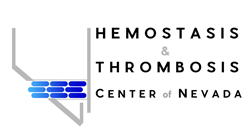There are many different types of therapies for bleeding disorders, and new ones are in development. Each person may respond to a treatment in their own way, so it is important to work closely with your hematologist to find a treatment that works for you.
Factor Replacement Therapies
Often referred to as “factor,” these products use a molecule that is either similar to natural factor found in humans (recombinant) or use an actual human molecule (plasma derived.) In fact, there are several human plasma-derived factor replacement products and recombinant products available to treat and prevent bleeds in people with hemophilia, von Willebrand disease, and more rare bleeding disorders. These treatments increase the amount of factor in the body to levels that lead to better clotting, and therefore less bleeding. The therapy is taken intravenously via an injection into a vein. This process is also called "infusion." There are two types of factor replacement therapies: standard half-life and extended half-life.
- Standard half-life therapies: Used to treat hemophilia A and B, some types of von Willebrand disease, and some rare factor disorders. Dosing can be anywhere from three times a week to every day, depending on the person.
- Extended half-life therapies: Contains a molecule that has been modified in some way to delay the breaking down of factor in the body. This results in higher levels of factor in the body lasting for longer, resulting in less frequent infusions. How long the factor is effective in the body depends on the person. Extended half-life therapies are mostly used to treat hemophilia A and B.
- Plasma-derived therapies: Factor concentrates that are extracted from human plasma. These products are treated by several methods to diminish or eliminate potentially infectious agents such as viruses.
- Bypassing agents are used to treat bleeds in people with hemophilia with inhibitors. These treatments contain other factors that can stimulate the formation of a clot and stop bleeding.
Non-factor Replacement Therapies
These products help prevent bleeding or assist in better clotting using other methods in the body besides replacing low factor levels. Non-factor replacement therapies include:
- Emicizumab (Hemlibra) is a therapy used to treat hemophilia A, to prevent bleeding episodes in people both with and without inhibitors. It is known as a factor VIII(8) mimetic because it mimics, or imitates, the way factor VIII(8) works. It brings together factor IX(9) and factor X (10), which allows the blood to clot. Unlike factor replacement therapy, in which the missing factor is injected directly into a person’s vein (called an infusion), emicizumab is given by an injection under the skin, called a subcutaneous injection. Emicizumab was approved by the FDA to treat people with hemophilia A with inhibitors in 2017 and for people with hemophilia A without inhibitors in 2018.
- Desmopressin (DDAVP) is the synthetic version of vasopressin, a natural antidiuretic hormone that helps stop bleeding. In patients with mild hemophilia, it can be used for joint and muscle bleeds, for nose and mouth bleeds, and before and after surgery. It comes in an injectable form and a nasal spray.
- NOTE: A DDAVP nasal spray under the brand name Stimate was subject to a recall in 2020. To date, Stimate manufacturer Ferring Pharmaceuticals has not resupplied the product. Learn more about efforts to produce and supply an alternative generic desmopressin-based nasal spray.
- Aminocaproic acid (Amicar) prevents the breakdown of blood clots. It is often recommended before dental procedures, and to treat nose and mouth bleeds. It is taken orally, as a tablet or liquid. MASAC recommends that a dose of clotting factor be taken first to form a clot, then aminocaproic acid, to preserve the clot and keep it from being broken down prematurely. This can be used to manage bleeding in people with hemophilia A, B and VWD.
- Hormone therapy, such as birth control pills, or oral contraceptives, can be taken to reduce heavy menstrual bleeding. The hormones in birth control pills can increase the levels of VWF and factor VIII (factor 8) in the blood.
Gene Therapy
Gene therapy is a way of treating a genetic disease or disorder by providing people with working copies of the gene to correct the disease or disorder. There are different approaches to gene therapy, including gene transfer and gene editing.
Currently, gene therapies for hemophilia A and hemophilia B work differently in the body and have different results. It is important that you work with your Hemophilia Treatment Center to learn more about gene therapy, to determine if you are eligible, to make certain you understand the risks and benefits, and to ensure you have the information you need to make the best decision for you.
Hemophilia A gene therapy has been approved by the FDA for the treatment of adults with severe hemophilia A without antibodies to adeno-associated virus serotype 5 (AAV5) detected by an FDA-approved diagnostic test.
Hemophilia B gene therapy has also been approved by the FDA for the treatment of adults with hemophilia B who currently use factor IX (FIX) prophylaxis therapy, or have current or historical life-threatening hemorrhage, or have repeated, serious spontaneous bleeding episodes.







